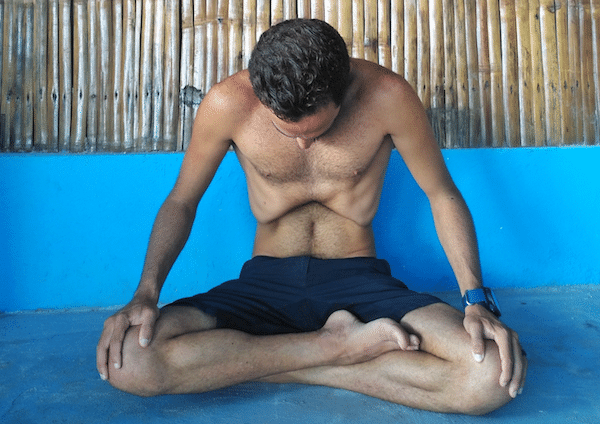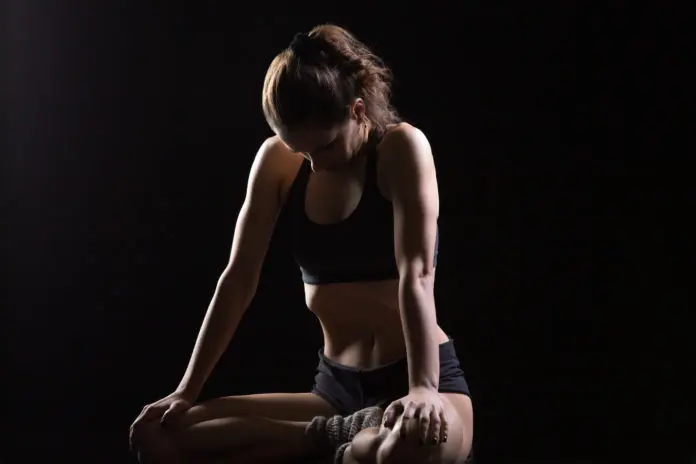Between all of the various stretching routines, yoga poses, diets, and cross-training variations, there are extensive discussions between freedivers concerning what is BEST for increasing performance. Some freedivers stretch before diving; others don’t. Some train more for cardiovascular fitness, others focus on strength training. Most of the time, we see that there is no solution that works for everyone, and the best thing to do is to experiment around and see what works for you. But there is one technique of Hatha Yoga that undeniably positively impacts a freediver’s depth performance: Uddiyana Bandha.
What happens to our chest at depth?
After we reach the residual volume of our lungs at depth, which is typically between 35 to 50m (115 to 164 feet), the pressure outside of our bodies will compress our lungs to a size smaller than that of a full exhale. It can be an uncomfortable feeling if the empty space left behind by the lungs is not filled, which can feel like an elephant is slowly stepping on our chests. The feeling will worsen when we tense our bodies since the diaphragm will not be able to move up into the chest and fill that empty space. When we reach deeper depths and start to feel that uncomfortable pressure, more often than not, it’s time to work on our diaphragm flexibility (or just start training ahead of reaching your residual volume).
Why Uddiyana Bandha is essential for freedivers
Diaphragm flexibility is necessary to have a more relaxed, safe, and enjoyable dive. Some of us are naturally more flexible than others, but for those of us who are not, Uddiyana Bandha can become our best friend.
Benefits of Uddiyana Bandha include:
- Improving the range of movement of the diaphragm, and an increased ability to raise it higher into the chest.
- Lowering the residual volume of the lungs, which results in a smaller ratio to the total lung capacity, and allows for deeper Frenzel equalization.
- Reducing the feeling of pressure on the chest during a dive. This is from the diaphragm’s ability to move up in the chest, which reduces the space and negative pressure created by the compression of the lungs.
- Teaching better control of the epiglottis, which increases the freediver’s ability to keep air in the mouth when performing mouthfill equalization (i.e. when you have difficulty due to losing your “fill”).
- Reducing the chance of a throat injury due to pressure, while also reducing the risk of lung squeeze.
- Training the body’s overall adaptation for depth since it simulates some of the effects of water pressure during a dive.
So, how do you perform Uddiyana Bandha?

Uddiyana Bandha can be performed sitting cross-legged on the floor, sitting on a chair with your feet touching the floor, or standing. It should be performed first thing in the morning, on an empty stomach, free of food or liquids.
- Relax your body and close your eyes if it will aid in relaxation.
- Perform a full exhale from the mouth. You can also bend forward to further empty the lungs. Your hands should be on your knees if sitting on the floor or in a chair, and mid-thigh if you are standing.
- Bend the head forward and draw the chin towards the chest, while raising the shoulders upward and forward. Keep the arms firm and straight.
- Keep the epiglottis closed, and expand the chest without inhaling. Avoid contracting your abdominals, which is a common mistake for beginners. When done correctly, the abdomen will automatically move inward and the diaphragm will move upward.
- Hold for as long as comfortable (but release before contractions start).
- When releasing, take a slow inhale to avoid feeling dizzy.
How often should you practice Uddiyana Bandha?
This sequence can be repeated 5 to 10 times a day, for 5 days a week. You can expect results to appear within 2 months. Remember to keep the chin tucked into the chest throughout the stretch, as it will protect you from a possible throat squeeze.
Whether you are looking to increase the limits of your Frenzel equalization, work on avoiding losing your mouthfill, avoid the uncomfortable feeling of negative pressure in your chest at depth, or protect yourself from throat and lung injuries, practicing Uddiyana Bandha can often solve or greatly reduce these issues.

